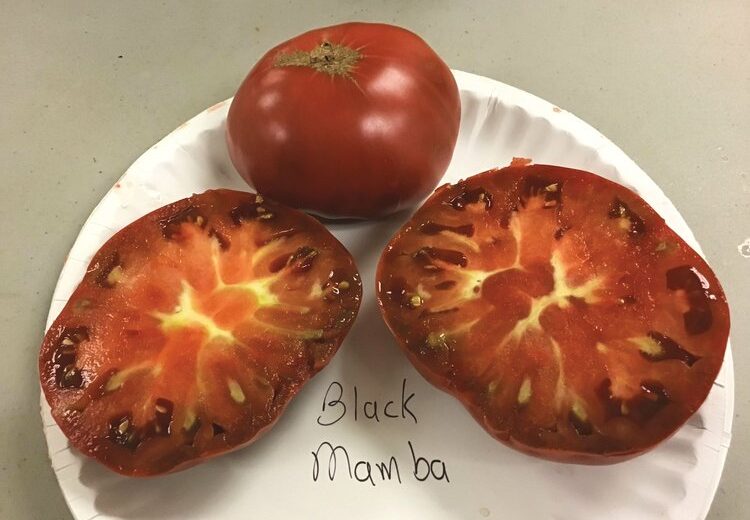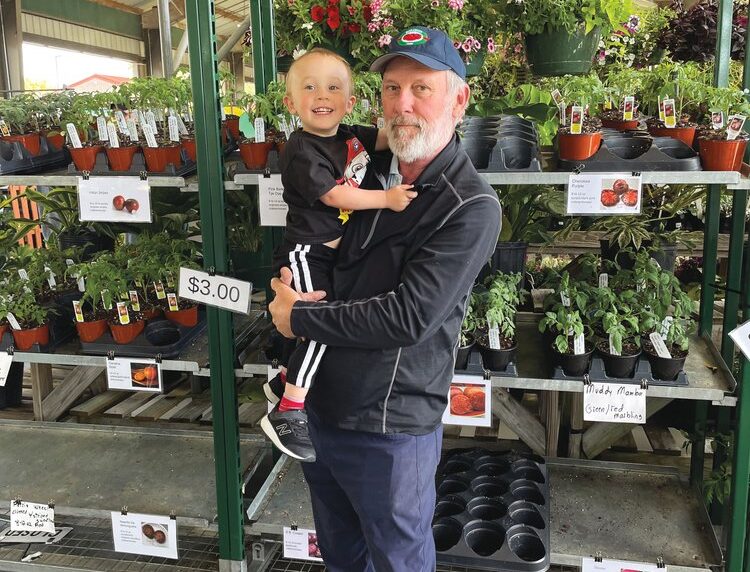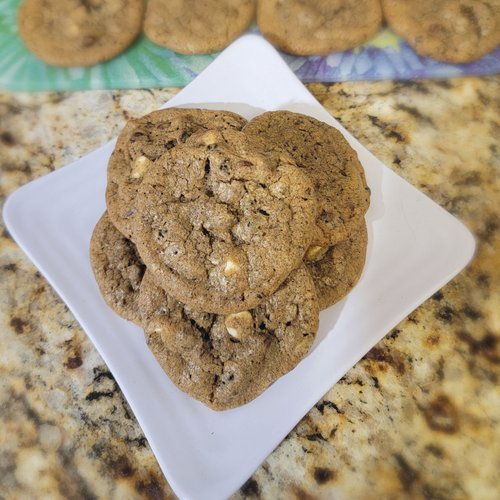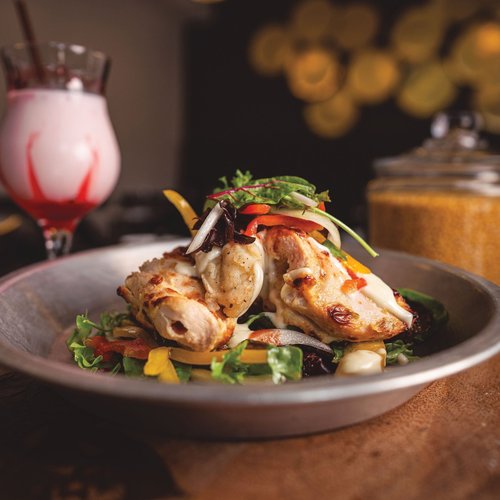Article:
A 6th generation heirloom vegetable farmer nurtures his family’s legacy
By Elizabeth Lincicome Photos courtesy of Gerald Adams
According to the U.S. Department of Agriculture, an estimated 10.3% of the U.S. labor force is made up of farmers and farm-related jobs—yet 100% of us eat. Agriculture is key for economic transformation, food security and nutrition, making farming one of the most important professions a person can pursue.
Sixth-generation farmer Gerald Adams agrees. He grew up on a tobacco farm outside Knightdale, and is one half of the eponymous Gerald and Henry’s Plants, also in Knightdale. The other half of the business’ name refers to his 3-year-old grandson, Henry.
Adams oversees two greenhouses on his farm, and also runs a stand at the State Farmers Market in Raleigh mid-March through early May, where he sells a diverse group of organic, locally grown heirloom tomato plants—more than 130 varieties this year alone. He also grows more than 50 varieties of peppers, 30 varieties of eggplant and Dwarf Tomato Project varieties, which are rapidly becoming more popular. “Gerald and Henry’s Plants was my dream for many years, but finally came to fruition in 2020,” Adams says. “Initially, I got started growing vegetable plants for roadside farmers. Now we’ve grown into a full-fledged vegetable plant retailer, and our tomato varieties have won taste competitions all across the U.S., while being featured in numerous magazines.”
A graduate of the University of North Carolina at Chapel Hill, Adams works as a horticultural and grounds superintendent for North Carolina State University’s Centennial Campus. He oversees 10 other grounds maintenance crew members who blow walkways, spray and pull weeds, spread mulch and prune hedges. His two-person horticultural crew designs, plants and maintains flower beds across Centennial Campus. Over a decade ago, Adams worked as grounds director for the North Carolina Executive Mansion. We talked tomatoes with Adams and learned all about a day in the life of an heirloom farmer.
What is a typical day like for you?
I’m a part-time nursery grower. My full-time job is horticulture and grounds supervisor for Centennial Campus for NCSU. I grow vegetable plants from late January through the middle of May. January and February are about starting seed trays for all the vegetables in the greenhouses. March is when things really ramp up, as I start potting seedlings in 4½-inch pots. By the end of March,
I start selling at the Raleigh [State] Farmers Market. I have a young lady who works 9 a.m.–2:30 p.m., Monday through Friday, then I take her place when I get off from NCSU and work 2:30–5 p.m., Monday through Friday. And I’m there 9–5 Saturday and Sunday. I then pot up plants almost every night in my greenhouses. This went on this past season for seven weeks.
What goes into the process of growing tomatoes, and what is the difference between hybrids verses heirlooms?
Tomatoes, peppers and eggplants are all grown mostly the same way. I start them in 128-count cell trays then move them to 4½-inch pots. Peppers and eggplants take longer to germinate and longer to get rooted in pots, so you have to start them two to four weeks earlier than tomatoes. There’s a lot of debate in defining an heirloom vegetable. Some say it has to be over 50 years old. Some say it has to be over 25 years old. Some say it has to have been passed down from generation to generation in a family or community. The one certain answer is: All heirloom vegetables are open-pollinated, which means the seed taken from a fruit will grow the same plant and fruit. Hybrids are cross-pollinated, which means the seed from these fruits can produce another plant or fruit that might be somewhat similar, or could be nothing like the previous fruit. Color, size and taste can [sometimes] be nothing like the original hybrid.
I know from experience in my own garden how hard it can be to keep the rabbits away from tomato plants. Any secrets?
Rabbits mostly bother young tomato plants. You can make a barrier out of chicken wire 2- to 3-feet tall, which will keep them out. You can also plant something like lettuce, which rabbits love more, and sacrifice the lettuce to keep them out of the tomatoes.
What makes this part of the state unique in terms of farming, and what about North Carolina in general?
Central North Carolina has a long summer vegetable growing season, usually from April 15 till early November. Really, any summer vegetable can be grown here. North Carolina, in general, has such an extensive farming history that vegetable growing—and all types of varieties—have been constants for years. On the farm I grew up on, we would have 3–5 acres of vegetables every year.
Where can people buy your produce, aside from the State Farmers Market?
I only sell plants at the Raleigh [State] Farmers Market. My greenhouses are in a location that is not retail-friendly. I do have a website (geraldandhenrysplants.com), but much of my sales come from word-of-mouth. I’m also a regular guest on Saturdays on the “WPTF Weekend Gardener” show on A.M. 680 radio, and many listeners of the show seek me out.
Is there competition among all the farmers who have stands at the State Farmers Market?
It’s not really competition. The other vegetable plant growers at the market also grow lots of flowers and other plants. I grow only vegetable plants. Some of them grow smaller plants in four-packs or six-packs, and some grow larger plants in 1 or 2 gallons. I have a much larger selection. This year I had 130 varieties of tomatoes, 30 varieties of eggplant and 50 varieties of peppers. If you added all of the varieties the other growers had all together it would not be anywhere close to the varieties I offer. Most of the growers at the market will point out another grower if a customer is looking for a particular plant that they do not have. The better the experience the customer has at the market, the more repeat customers—and all growers benefit.
Can you explain what it takes to earn a spot selling produce at the State Farmers Market?
Depending on the time of year, you may have to get on a waiting list. Many growers, like me, are seasonal. Christmas tree growers are [there in] November and December, for example, and strawberry growers [are there in] late April until early June. Return growers get priority over new growers.
Do you have any environmental concerns for the future? There is so much discussion around global warming and issues such as that.
I think most farmers, nursery growers, are naturally pessimistic. I’m growing my plants organically because there is a demand [for them]. I don’t have a problem using chemicals because I know how to correctly apply them, but some people don’t.
What about ongoing supply chain issues? Has COVID or the war in Ukraine impacted your business in any way?
All have had an effect. Nursery pots are in short supply because of a two-year polyethylene shortage. Prices have doubled. Inflation is the biggest problem. Gas and diesel fuel have skyrocketed, soil is up 30%, fertilizer has more than doubled. I should have increased my prices this past year but did not. I will have to increase them next season.”
Learn more about Gerald and Henry’s Plants at geraldandhenrysplants.com.







